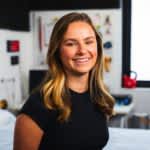When you buy through our links, we may earn a commission. Products or services may be offered by an affiliated entity. Learn more.
Tempur-Pedic is a mattress company that is well-known for popularizing the use of memory foam comfort layers in beds. Since memory foam is known for its pressure-relieving hug, Tempur-Pedic’s models are popular with side sleepers. However, each model has distinct advantages that may appeal to certain sleepers.
- Our top pick — the Tempur-Pedic TEMPUR-ProAdapt — has memory foam that closely contours to the body, smoothing out pressure points for deeper sleep.
- Selecting the best Tempur-Pedic mattress for you can ensure you enjoy the right balance of contouring and support, relieving pressure points while promoting proper spinal alignment.
- Want to get the best guidance for choosing a Tempur-Pedic mattress? Dive into our guide for all the top tips.
Our Top Picks
-
Best Mattress Overall – Tempur-Pedic TEMPUR-ProAdapt
View Details
-
Best Value Mattress – Tempur-Pedic TEMPUR-Cloud
View Details
Swipe for more
Best Mattress Overall
Tempur-Pedic TEMPUR-ProAdapt
8.2 /10
Test Lab Score
$3,399 from Tempur-Pedic (queen)
$3,399 from Tempur-Pedic (queen)
Tempur-Pedic’s mattresses are best known for their pressure-relieving properties, but the TEMPUR-ProAdapt takes it to the next level with advanced memory foam designed for superior conforming. Deep cradling helps take pressure off a side sleeper’s hips and shoulders without letting them sag. This model comes in three firmness options to better accommodate side sleepers with different body types.
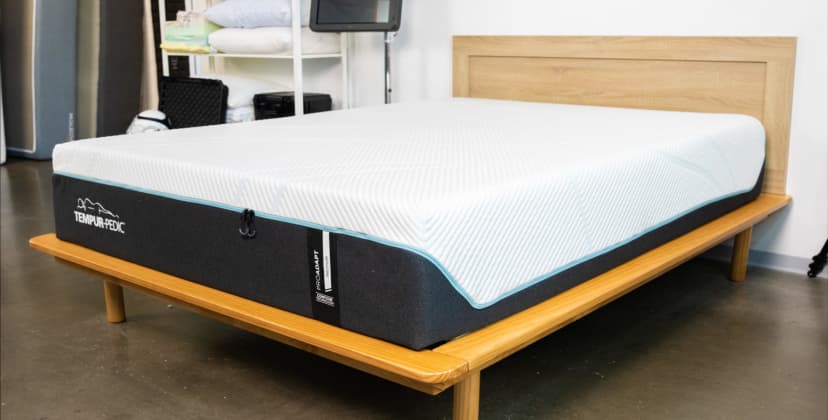
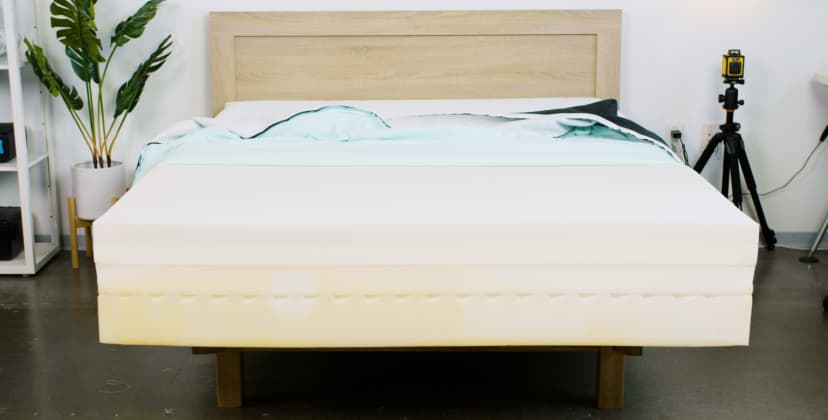

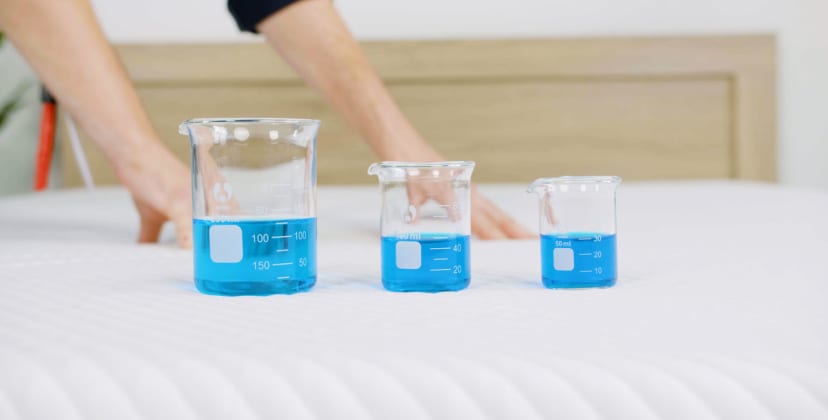
Credit: Sleep Foundation Test Lab
Price
$3,199
Mattress Type
Foam
Firmness Options
Soft (3), Medium (5), Firm (7)
Trial Period
90 nights (30-night requirement)
At a Glance
- Who It’s Best for: Side sleepers across all weight groups who experience sharp pressure points.
- Feel: Available in plush soft (3), balanced medium (5), and supportive firm (7) designs. The hybrid is also medium (5)
- What It’s Made of: Two comfort layers of high-density TEMPUR memory foam, followed by a dense foam base. A hybrid version with pocketed coils instead of base foam is also available.
- What We Don’t Like: Limited edge support for all three designs, plus the foam layers can sink and hinder movement on the surface.
Scoring Breakdown
The following ratings show how suitable this mattress is for different sleeping positions and sleeper weights. These scores are determined by how well the mattress supports and relieves pressure for each sleeper type.
Full Details
High-end contouring from the TEMPUR-ProAdapt’s comfort and transition layers can help ease the sharp pressure points side sleepers often experience, making it a strong option. Three firmness options are available: soft, medium, and firm. The soft version rates around 3 on the 10-point firmness scale, the medium option comes in at 5, and the firm option is around a 7, while the hybrid option has a medium (5) feel.
How It Performed
All versions of the mattress tend to excel in terms of pressure relief and motion isolation. Side sleepers on our team weighing less than 130 pounds preferred the soft model, those between 130 and 230 pounds felt more comfortable on the medium, and those over 230 pounds appreciated the extra support of the firm.
Construction Breakdown
All versions of the TEMPUR-ProAdapt feature two layers of adaptive TEMPUR foam in the comfort system. These layers are designed to cradle the body and relieve pressure on key areas like the shoulders and hips, which are common pressure points for side sleepers. The top layer is ventilated to promote airflow and help dissipate heat, ensuring a cooler and more comfortable night’s rest.
In the all-foam models, the support core is made from high-density polyfoam, offering consistent support and minimal sinkage. The hybrid version incorporates pocketed innerspring coils in the support core, adding a gentle bounce and zoned support, which helps maintain proper spinal alignment for side sleepers.
All TEMPUR-ProAdapt mattresses are 12 inches tall and feature a removable, stretchy fabric cover that is machine-washable, making it easy to maintain a clean and fresh sleep environment. For side sleepers seeking superior pressure relief, motion isolation, and durability, the TEMPUR-ProAdapt is a top contender.
Trial, Shipping, & Warranty
The TEMPUR-ProAdapt comes with free White Glove delivery within most of the contiguous United States. This service includes set up of the new mattress and removal of the old mattress. Customers can take advantage of a 90-night trial period and a 10-year limited warranty.
Best Value Mattress
Tempur-Pedic TEMPUR-Cloud
7.7 /10
Test Lab Score
30% off with code: CLOUD30
30% off with code: CLOUD30
Tempur-Pedic mattresses have a reputation for luxury. The TEMPUR-Cloud follows suit but with a twist: The price-point is lower than Tempur-Pedic’s other models. But like alternatives in the line, the TEMPUR-Cloud still boasts the qualities the brand is popular for. Two layers of Tempur-Pedic’s trademark memory foam ease pressure around a side sleeper’s sensitive regions, and sleepers should feel little to no motion when their partner moves. This model comes in all-foam and hybrid designs.
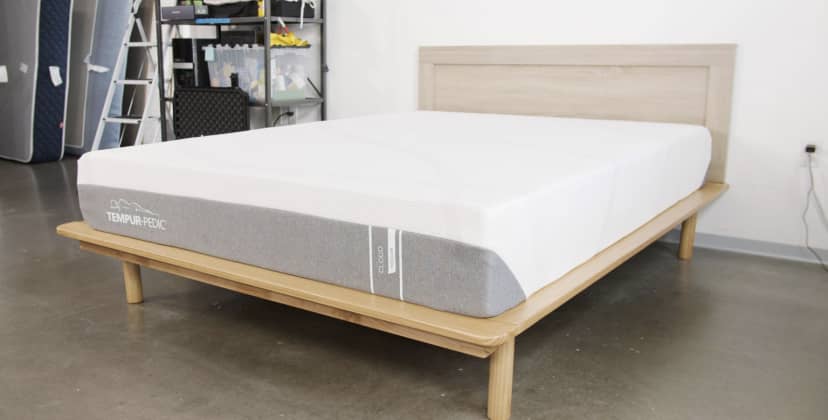
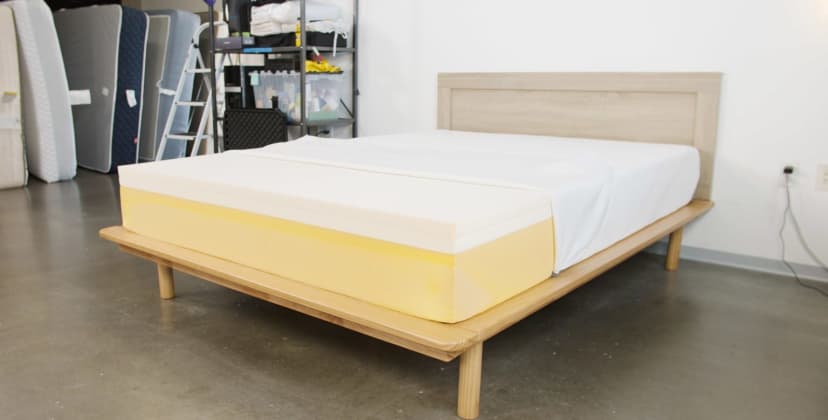
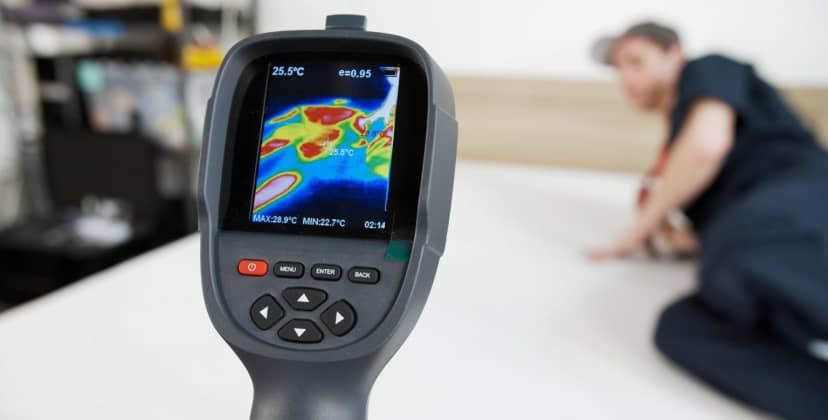

Credit: Sleep Foundation Test Lab
Price
$1,399
Mattress Type
Foam
Firmness Options
Medium (5)
Trial Period
90 nights (30-night requirement, $175 return fee)
At a Glance
- Who It’s Best for: Side sleepers who weigh up to 230 pounds.
- Feel: The mattress is medium (5) with foam layers that contour closely and cradle your body’s unique shape.
- What It’s Made of: Two comfort layers of TEMPUR memory foam over a support core of high-density polyfoam.
- What We Don’t Like: Weak along the perimeter and potentially too soft for side sleepers over 230 pounds.
Scoring Breakdown
The following ratings show how suitable this mattress is for different sleeping positions and sleeper weights. These scores are determined by how well the mattress supports and relieves pressure for each sleeper type.
Full Details
The TEMPUR-Cloud – Tempur-Pedic’s first “mattress-in-a-box” model – molds closely to the body, taking pressure off the hips and shoulders of side sleepers. This mattress also excels at motion isolation, and the direct delivery option will no doubt entice some online shoppers.
How It Performed
The TEMPUR-Cloud’s medium (5) feel makes it particularly well suited for side sleepers who weigh less than 230 pounds. Its combination of pressure relief and motion isolation may appeal to side sleepers with sharp pressure points and those who sleep with partners.
Both the comfort and transition layers use memory foam to cushion the body and adjust to its shape for exceptional pressure relief, while the polyfoam core adds durable support. The cover is breathable and moisture-wicking to reduce heat retention. It is also somewhat stretchy so that it does not restrict the mattress’s contouring capabilities.
Construction Breakdown
The TEMPUR-Cloud is a 10-inch all-foam mattress designed with side sleepers in mind. It has a medium (5) firmness level, offering a balanced feel that gently cushions pressure points like the shoulders and hips while maintaining proper spinal alignment.
This mattress features three interior layers, with the top two layers forming the comfort system. Both layers are crafted from TEMPUR memory foam, a material known for its exceptional contouring capabilities. For side sleepers, this means reduced pressure on sensitive areas and better support for the natural curvature of the spine. The memory foam also excels at minimizing motion transfer, making it a great choice for those who share the bed.
The support core consists of dense polyfoam, which provides a sturdy foundation and helps maintain the mattress’s shape and durability over time. Completing the design is a stretchy fabric cover that feels soft and smooth, enhancing the overall comfort and breathability of the mattress.
Trial, Shipping, & Warranty
The TEMPUR-Cloud is a mattress-in-a-box model with free to-the-door delivery within the contiguous United States. A 90-night trial gives customers a chance to try the mattress at home, while a 10-year limited warranty protects against qualifying defects.
Best Cooling Mattress
Tempur-Pedic TEMPUR-ActiveBreeze Smart Bed
8.4 /10
Test Lab Score
$9,988 from Tempur-Pedic (queen)
$9,988 from Tempur-Pedic (queen)
The TEMPUR-ActiveBreeze Smart Bed combines close-conforming memory foam with a climate control system. The memory foam prevents pressure buildup around a side sleeper’s sensitive areas and ensures sleepers don’t notice a lot of vibrations when their partner moves. The climate control system lets each sleeper select the level of cooling that’s right for them, preventing uncomfortable heat buildup common in memory foam models.

Price
$9,998
Mattress Type
Hybrid
Firmness Options
Medium (5)
Trial Period
90 nights (30-night requirement)
At a Glance
- Who It’s Best for: Side sleepers with back pain who want to be hugged by their mattress without overheating.
- Feel: A medium (5) mattress, the TEMPUR-ActiveBreeze hugs your body closely while resisting heat buildup to help you stay cool.
- What It’s Made of: The mattress is a hybrid with two memory foam comfort layers over a pocketed coil support core. This model also comes with an adjustable bed base.
- What We Don’t Like: The steep luxury price will be a barrier for many shoppers.
Scoring Breakdown
The following ratings show how suitable this mattress is for different sleeping positions and sleeper weights. These scores are determined by how well the mattress supports and relieves pressure for each sleeper type.
Full Details
Like Tempur-Pedic’s other models, the TEMPUR-ActiveBreeze has notable pressure relief for a side sleeper’s hips and shoulders. Thanks to its added cooling features, the TEMPUR–ActiveBreeze may have an edge with side sleepers who tend to sleep hot.
How It Performed
A cool-to-the-touch cover encases the bed. The top layer is composed of TEMPUR foam that hugs your body deeply for excellent cradling, followed by another layer of TEMPUR foam for enhanced cushioning. Beneath is a layer of coils that promote ventilation. With a medium (5) feel, the bed is a great fit for side sleepers who weigh under 230 pounds. Those who weigh more than 230 pounds may sink too deeply for comfortable spinal alignment.
Construction Breakdown
The TEMPUR-ActiveBreeze Smart Bed is a 13-inch medium (5) hybrid mattress designed to combine advanced comfort, cooling, and support. The mattress features a cool-to-the-touch cover made with fibers engineered to transfer heat away from the body. This cover not only enhances cooling but is also removable and machine-washable, making it simple to maintain a fresh and clean surface.
The mattress’s comfort system includes two layers of TEMPUR memory foam, which adapt to the sleeper’s unique shape, delivering the signature contouring and pressure relief Tempur-Pedic is known for. These layers help reduce pressure on areas like the shoulders, hips, and back while supporting proper spinal alignment. To improve airflow and prevent overheating, the memory foam is ventilated with small holes that allow heat to escape and air to circulate. Beneath the foam layers, the support core features individually pocketed coils, which add responsiveness, durability, and deeper support while enhancing the foam’s contouring capabilities. This hybrid design strikes a perfect balance between the foam’s pressure relief and the coils’ bounce and support.
Paired with the TEMPUR-Ergo ProSmart Air Base, the sleep experience becomes even more personalized. The adjustable base offers head and foot lifts for customizable positions, built-in fans with three settings for temperature control, and an adjustable lumbar support feature that can lift up to six inches to promote better posture. Each partner can independently control their side of the bed, ensuring tailored comfort. Additionally, the base connects with a companion app to deliver sleep-tracking insights, personalized coaching, and features like head elevation for snoring detection. It also offers soothing sounds and massage options to help you relax and fall asleep more easily.
Shipping, Trial, & Warranty
Free White Glove delivery is standard in the contiguous United States, and it includes new mattress setup and old mattress haul away. The bed also comes with a 90-night sleep trial and a 10-year limited warranty.
The Best Deals of the Week
-
Save $166
—
Brooklyn Bedding CopperFlex Memory Foam
$499 (List Price $665) -
Save $475
—
Helix Midnight Luxe
$1,899 (List Price $2,374) -
Save $2,518
—
Nectar Adjustable Bundle
$1,398 (List Price $3,916) -
Save $300
—
WinkBed
$1,499 (List Price $1,799) -
Save $965
—
DreamCloud Mattress
$699 (List Price $1,664)
Best Mattress Overall
Tempur-Pedic TEMPUR-ProAdapt
8.2 /10
Test Lab Score
$3,399 from Tempur-Pedic (queen)
Shop NowDesigned for advanced pressure relief with two close-conforming memory foam layers.
See More Details

Credit: Sleep Foundation Test Lab
Best Value Mattress
Tempur-Pedic TEMPUR-Cloud
7.7 /10
Test Lab Score
30% off with code: CLOUD30
Shop NowA pressure-relieving Tempur-Pedic mattress that balances quality and affordability.
See More Details
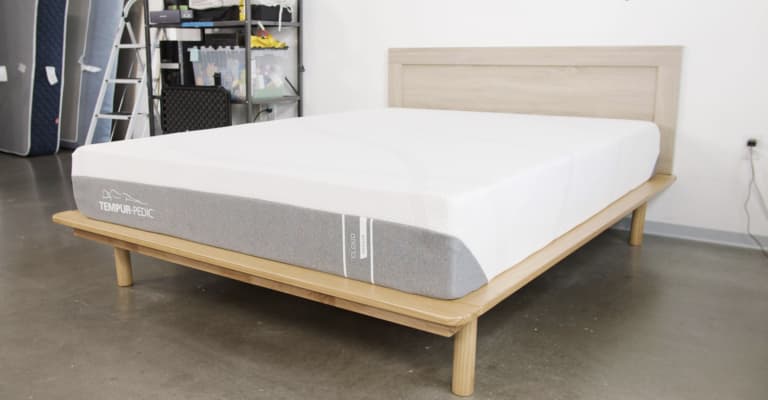
Credit: Sleep Foundation Test Lab
Best Cooling Mattress
Tempur-Pedic TEMPUR-ActiveBreeze Smart Bed
8.4 /10
Test Lab Score
$9,988 from Tempur-Pedic (queen)
Shop NowA highly conforming Tempur-Pedic mattress with built-in climate control.
See More Details

Side Sleeping Explained
For many individuals, side sleeping is the most comfortable sleep position. It can carry a wide array of potential benefits, including:
- Reduced pain. When sleeping on a mattress that strikes the right balance of support and contouring, many individuals report less back and joint pain.
- Reduced snoring. Side sleeping usually leads to less airway compression and obstruction than back sleeping, so many sleepers snore less when sleeping on their sides.
- Less heartburn. Sleeping on the left side tends to ease heartburn and acid reflux symptoms. This is because the stomach is slightly to the left, and gravity helps keep stomach acid from migrating into the esophagus when you lie on your left side.
- Increased blood flow. Sleeping on the left side is also thought to improve circulation by limiting pressure on the blood vessels that return blood to your heart.
While side sleeping is usually beneficial for most sleepers, a few potential drawbacks can arise.
- Shoulder pain. Sleeping on a mattress without enough contouring could lead to more shoulder pain. This is in part because the mattress could force the shoulder underneath you up towards your neck and out of alignment.
- Neck pain. Side sleeping without a sufficiently supportive pillow could contribute to neck pain, so most side sleepers should select the best pillow that has enough loft to keep their neck straight. Sleeping in the fetal position could also lead to neck and back pain.
- Arm numbness. The arm that is positioned under the body may tingle or go numb as a result of the weight of the body compressing it.
To maximize the benefits and limit the drawbacks, side sleepers may want to sleep on their left side with a supportive pillow that fills the gap between their neck and the mattress. A mattress with the ideal balance of contouring and support can also help.
What to Consider in a Tempur-Pedic Mattress for Side Sleepers
As noted above, sleeping on your side carries potential benefits and drawbacks that may affect which mattress is the best choice for you. As a side sleeper’s hips and shoulders are usually the widest parts of their body, pressure buildup is common. Side sleepers may also struggle to maintain their spinal alignment, which can put pressure on their lumbar region. Knowing what to look for as you shop for a Tempur-Pedic mattress can help you ensure you select a model that meets your needs and preferences.
What to Look for in a Mattress for Side Sleepers
Regardless of your sleep position, some traits tend to be most important when selecting a mattress. Side sleepers should also take their way of sleeping into account to find the best mattress for them. Mattress companies sometimes use misleading words and phrases, like “universal comfort,” but what is comfortable for others may not be best for side sleepers.
When mattress companies claim that their mattress is comfortable for every sleeper, that usually just means that it is a mid-range firmness that can accommodate the needs of most sleepers. However, side sleepers who weigh less than 130 pounds and those that weigh over 230 pounds may rest more comfortably on softer or firmer models respectively.
Tempur-Pedic offers a range of mattress models, so there’s something for virtually any side sleeper. Focusing on the following traits may make it easier to select the best option for you.
Pressure Relief
Pressure relief tends to be especially important for side sleepers because their hips and shoulders usually put more pressure on the mattress than the rest of their bodies. With some models, this can lead to aches and pains from sharp pressure points. Mattresses crafted for pressure relief redistribute your weight, taking pressure off your hips and shoulders. However, finding the ideal balance between pressure relief and support also requires selecting the right firmness.
Firmness Level
Since firmness is directly linked to pressure relief, side sleepers often benefit from basing their firmness selection on their body type. Individuals who weigh less than 130 pounds typically prefer beds around a medium soft (4) or softer. Those who weigh between 130 and 230 pounds usually like a medium (5) to medium firm (6) model. Side sleepers who weigh over 230 may be best served by a medium firm (6) or firm (7-8) mattress. Sleeping on a mattress that is too soft could allow a side sleeper’s hips and shoulders to sink in excessively, putting a strain on their spine. However, a model that is too firm may not let the hips and shoulders sink in enough, which could lead to more pressure buildup.
Contouring
Contouring is how the mattress shapes to your body. Mattresses that contour well let a side sleeper’s hips and shoulder sink in while supporting proper spinal alignment. When a mattress adjusts to the sleeper’s body, it also typically limits pressure buildup by spreading out their weight more evenly.
Price
For many shoppers, the price may be a key factor in which mattress they ultimately select. Tempur-Pedic produces luxury mattresses, so they tend to be higher in price than many models. However, buyers shouldn’t look at the price point alone. Due to their quality construction, Tempur-Pedic mattresses may last longer than some lower-priced models, which could make them a better value over the life of the mattress.
Quality Materials
A mattress’s materials determine its performance and durability. Quality materials usually last better over time, so side sleepers should be able to enjoy contouring and support for years to come. Lower quality materials may be more likely to break down, sag, or retain lasting impressions. As a luxury mattress manufacturer, Tempur-Pedic mattresses are prized for their quality materials.
Edge Support
Side sleepers who like to sit or sleep near the perimeter of the bed may prefer a mattress with good edge support. All-foam models typically do not have reinforced edges, so there may be some sinkage around the perimeter. This is especially likely with softer models. Some sleepers may feel insecure when they sit or sleep near the edge, limiting the usable mattress surface. Hybrid and innerspring models generally have superior edge support, so sleepers who need solid edge support will want to consider Tempur-Pedic’s hybrid models.
Temperature Regulation
If you tend to sleep hot during the night, you may prefer a mattress with strong temperature regulation. Memory foam has a reputation for retaining heat, but many manufacturers have adjusted their designs to counteract this. While each of Tempur-Pedic’s mattresses uses some cooling technology, the Tempur-Pedic TEMPUR-breeze° has enhanced cooling features that may appeal to hot sleepers.
Ease of Movement
Some mattress models are easier to move around on than others. People with mobility issues and those who toss and turn during the night often prefer models that do not restrict their movement. Due to its close hug and relatively slow response to changes in pressure, memory foam is the material most often associated with low ease of movement scores. However, many models with memory foam still perform well enough in this category, especially if they have a firmer feel.
Mattress Type
The type of mattress influences its performance, pricing, and durability. Most mattresses on the market today are either foam, latex, hybrid, or innerspring. Depending on the model’s unique construction, any of these options may be appropriate for side sleepers. However, many side sleepers gravitate towards foam, latex, or hybrid models for the conforming and pressure relief of their comfort systems. Tempur-Pedic produces foam and hybrid models.
Other Considerations for Side Sleepers
Weight: A sleeper’s weight plays a role in how a mattress feels, but this is often particularly true for side sleepers. In general, individuals who weigh between 130 and 230 pounds usually prefer a medium to medium firm model. Those that weigh less tend to like a softer option, while those that weigh more generally favor a firmer feel. If the mattress is too firm for a side sleeper’s weight group, they may not sink in enough to enjoy pressure-relieving contouring. However, if it is too soft for their weight group, their hips and shoulders may dip too deeply into the mattress and put a strain on their lumbar region.
Pelvic Rotation: Side sleepers should pay attention to how they position themselves to avoid pelvic rotation. Some side sleepers tend to twist their bodies, which can rotate their pelvis and put their spine out of alignment. Sleeping with the legs fully extended usually helps minimize pelvic rotation.
Shoulder Pain: Side sleepers may experience shoulder pain for a number of reasons. It can occur as a result of pressure buildup from sleeping on a mattress without enough contouring. Additionally, the shoulder underneath your body may also collapse against the mattress, pushing it up towards your neck and potentially straining the area.
What is a Tempur-Pedic Mattress?
Tempur-Pedic is the pioneer of the memory foam mattress. It developed its special TEMPUR material based on foam developed by NASA for spacecraft seats. Since then, Tempur-Pedic has developed several variations on its standard material engineered for pressure relief, motion isolation, and durability. The main product line consists of five models, including the TEMPUR-Cloud, the TEMPUR-Adapt, the TEMPUR-ProAdapt, the TEMPUR-LuxeAdapt, and the TEMPUR-breeze°.
Each mattress has slight variations in its materials and design based on its intended firmness and performance, but they tend to use the same basic structure. Tempur-Pedic does not publicly release many specifics about its mattress construction, but customers can typically expect the following.
- Cover: Most Tempur-Pedic mattress covers are breathable to help keep the sleep surface cool. Many models have removable, machine-washable covers for easy cleaning.
- Comfort Layer: The comfort layer typically consists of TEMPUR memory foam. Depending on the model and firmness, this may be TEMPUR, TEMPUR-ES, TEMPUR-APR, or TEMPUR-CM+. Underneath the comfort layer, there is generally a second layer of memory foam that adds contouring and helps prevent the sleeper from sinking in against the mattress core.
- Support Core: All-foam Tempur-Pedic mattresses have a polyfoam core to support the sleep surface. Hybrid models have coil cores that add bounce, breathability, and edge support.
Current Tempur-Pedic Mattress Models
| Model | Type | Firmness | Price |
|---|---|---|---|
| TEMPUR-Cloud | All-Foam | Medium (5) | $1,999 |
| TEMPUR-Adapt | All-Foam, Hybrid | Medium (5) | $2,199 |
| TEMPUR-ProAdapt | All-Foam, Hybrid | Soft (2-3), Medium (5), Firm (7-8) | $2,999 |
| TEMPUR-LuxeAdapt | All-Foam | Soft (2-3), Firm (7-8) | $3,699 |
| TEMPUR-PRObreeze° | All-Foam, Hybrid | Medium (5) | $3,999 |
| TEMPUR-LUXEbreeze° | All-Foam | Soft (2-3), Firm (7-8) | $4,699 |
Are Tempur-Pedic Mattresses Best for Side Sleepers?
Tempur-Pedic mattresses are often ideal for side sleepers. The company’s innovative memory foam materials excel in pressure relief. Side sleepers often experience sharp pressure points due to their hips and shoulders putting direct force on the mattress, so pressure relief is frequently a high priority for this group.
Our picks are particularly well suited to side sleeping because of their balance between contouring and support. One of these options should be a good fit for most side sleepers, regardless of their body types and sleep styles. However, finding the best Tempur-Pedic mattress for you requires some consideration into these factors.
Those who weigh under 130 pounds will likely prefer one of Tempur-Pedic’s softer options. Individuals between 130 and 230 pounds should sleep comfortably on a medium model. People who weigh more than 230 pounds may get the extra support they need from one of Tempur-Pedic’s firm options.
Performance varies slightly between models, so shoppers should take their priorities into account when choosing a Tempur-Pedic mattress. Side sleepers prone to overheating during the night may prefer the enhanced cooling of the TEMPUR-breeze°. Those looking for extra bounce or edge support might want to go with one of Tempur-Pedic’s hybrid options.
How We Test: Your Comfort Is Our Science
Our industry-leading product testing team cares deeply about improving your sleep. Having a holistic understanding of a mattress’s role as part of a sleep system is paramount to our testing process. Since a bed’s comfort and feel depend largely on body weight and sleeping position, our testing team represents a wide range of body types, sleep positions, and comfort preferences.
In our Seattle-based Test Lab, we use an objective, hands-on process to evaluate mattresses across performance categories. The following are the key guidelines that inform our performance ratings. Our ultimate goal is to ensure you have all the information you need to make the best purchase decision for you.
Construction analysis: We begin testing each mattress by analyzing its design and making note firmness, height, individual layer composition, and sticker price. This allows us to evaluate qualities like support, durability, and value.
Product testing: Firsthand testing is crucial to our evaluation and ratings system. We use a wide range of tools and technology to test mattresses in six performance categories: motion isolation, pressure relief, temperature control, ease of movement, edge support, and odor potential.
Field testing: In addition to lab-based tests, we base our ratings on feedback from field testers who use the mattresses in their own homes. They spend several weeks collecting data — this gives us insights into how the mattress performs night after night for an extended period.
User testing: We curate feedback verified owners have provided in surveys, sleep stories, and product reviews. This helps us evaluate our initial findings and, if needed, tweak our ratings to reflect real-world experiences.
How We Determine Our Overall Scores


To determine a mattress’s overall score, we assign weighted percentages to performance categories based on how important they are to the individual sleep experience. For instance, areas like pressure relief and temperature control tend to matter more to people than something like off-gassing, and because more people sleep on their side and back than on their stomach, we weigh those positions more heavily.
Performance Categories
Motion Isolation
This criteria alludes to the amount of motion a mattress absorbs when a sleeper moves on the surface. We use two testers lying side by side to evaluate motion isolation, who each feel for transfer while the other person moves on the mattress.
Temperature Control
To determine how well a mattress regulates temperature, we perform temperature tests and look closely at its materials and construction. Many mattresses are designed with cooling components meant to reduce heat retention.
Pressure Relief
A bed with strong pressure relief excels at preventing pressure from building up in areas like the shoulders and hips. Beds with even contouring and weight distribution are top performers when it comes to pressure relief.
Off-Gassing
A mattress in a box may release unpleasant chemical odors for a short period after you’ve unboxed it. The initial smell may be strong but typically fades within 2 or 3 days.
Ease of Movement
This criteria reflects how easily a sleeper can move across a bed’s surface. Responsive surfaces made of latex typically perform better than foam surfaces, which can inhibit movement.
Edge Support
We perform sit tests along a bed’s perimeter to measure how well the edges push back against weight. Mattresses with strong edge support have minimal sagging when sleepers sit on or lie close to the perimeter.
Dive Deeper – Mattress Guides by Sleeper Type
If you’re still not sure if a Tempur-Pedic mattress would be the best fit, you can check out our collection of mattress guides broken down by types of sleepers.
Best Mattress by Sleeper Type
- Best Mattress for Athletes
- Best Mattress for Couples
- Best Mattress for Kids
- Best Mattress for Toddlers
- Best Mattress for Seniors
- Best Mattress for Teenagers
- Best Cooling Mattress for Hot Sleepers
- Best Mattress for Stomach Sleepers
- Best Tempur-Pedic Mattress for Back Sleepers
- Best Tempur-Pedic Mattress for Stomach Sleepers
Last Things to Consider with a Tempur-Pedic Mattress for Side Sleepers
Before you buy a Tempur-Pedic mattress, you may still have some lingering questions. We’ll answer some of the most common questions you may have to help you make your purchase more confidently.
Which Mattress Firmness is Best for Side Sleepers?
Tempur-Pedic has several firmness options, each of which may be best for some side sleepers. As a general rule, the best firmness for side sleepers will depend on their weight. Those who weigh less than 130 pounds will experience more contouring on one of Tempur-Pedic’s soft options. People who weigh between 130 and 230 pounds are likely to prefer one of Tempur-Pedic’s medium options. Individuals who weigh over 230 may like a firm Tempur-Pedic so that their hips and shoulders don’t sink in too deeply.
What Other Products Does Tempur-Pedic Offer?
In addition to its popular mattresses, Tempur-Pedic also produces other sleep products, like sheets, pillows, toppers, blankets, bases, sleep masks, and slippers. The company also offers other products that include the proprietary TEMPUR material, including stuffed animals and cushions.
How Much do Tempur-Pedic Mattresses Cost?
A Tempur-Pedic queen mattress ranges in price from around $2,000 to over $4,000. Since this is higher than the average cost for a new mattress, some shoppers may find these prices surprising. However, these are luxury models with high-quality materials that should last longer than many mattresses on the market, so a Tempur-Pedic mattress could ultimately cost less per year of use than some lower-priced models.
How Durable Are Tempur-Pedic Mattresses?
Tempur-Pedic mattresses are typically more durable than many memory foam models on the market. Some mattresses develop lasting sagging or impressions over time, limiting how long side sleepers can enjoy them. However, Tempur-Pedic’s high-quality materials usually resist indentations. While we would typically expect a memory foam mattress to last for 6.5 to 7 years, we would expect most Tempur-Pedic mattresses to last for at least 7 years.
Mattress Warranty and Other Policies
Tempur-Pedic mattresses purchased directly through the company come with a 90-night sleep trial and 10-year limited warranty. To be eligible to return the mattress, customers must first try it for at least 30 nights. Customers may incur a $175 shipping fee for returns. The warranty provides for the repair or replacement of mattresses with qualifying defects. The owner is responsible for transportation costs. Additional terms and conditions apply.

Still have questions?
Our product experts have extensive experience testing just about every sleep product on the market.
Send an email to [email protected] with your questions and we’ll help you find exactly what you’re looking for.

